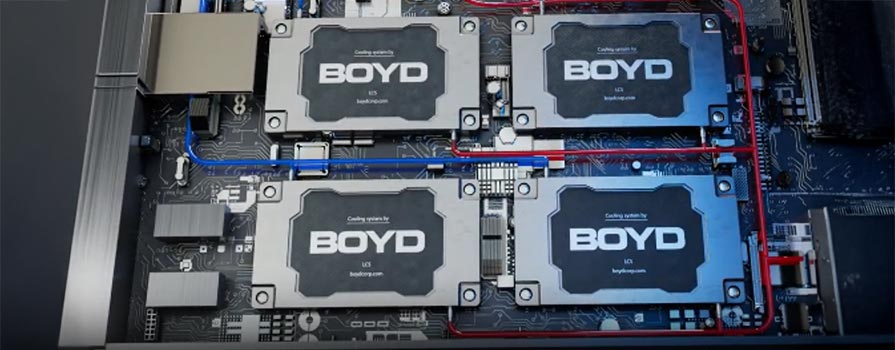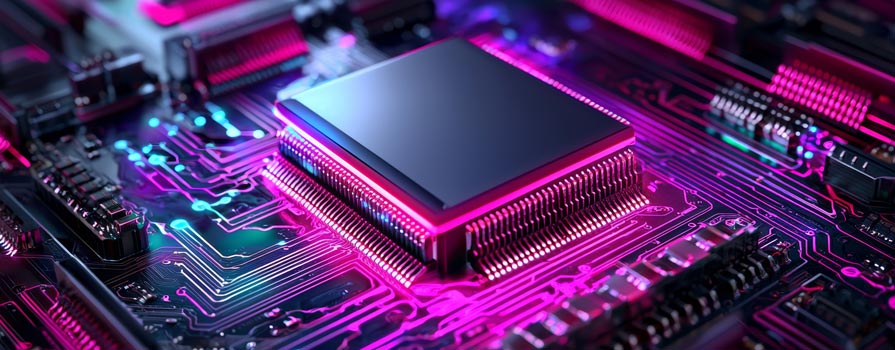As nearly every industry employs devices and electronics that require increased power, more efficient cooling for high heat loads in compact spaces has never been more important. Boyd has decades of experience providing CDUs (Coolant Distribution Units) to help precisely cool and protect enterprise electronics and hyperscale, IOT, and cloud systems. We provide CDU solutions that are right-sized and custom-configured to help maintain uptime and lower total data center cost of ownership.
To help shed some light on incorporating a CDU into a data center cooling system, we sat down with one of our thermal experts to discuss some of the most important implementation considerations.
Have a coolant distribution service request?
Why would you need a CDU for data center cooling?
Uninterrupted, 24/7 data center operation is critical for business continuity. As thermal requirements have increased along with computing power, many enterprise applications have surpassed what traditional air cooling can achieve. A CDU offers a higher level of cooling capacity in a more compact, flexible solution, and is an efficient option for cooling and protecting data center components.
How important is Hot Swapping? Do I need Hot Swapping features in my system?
Uptime for servers in a data center is crucial, so having hot-swappable components (or components that are replaceable during continued operation) can help avoid service disruptions. Boyd’s cooling distribution units have multiple components that are hot-swappable, including cold plates and pumps to help expedite system service and minimize maintenance downtime.
How do you prevent condensation and leaks in a CDU?
Any amount of condensation or liquid leaking from a cooling system can cause damage or failure to any of the equipment inside of a server rack. Temperature and humidity sensors are typically installed to ensure that the data center is operating below dew point to mitigate any condensation risk on system piping.
While Boyd’s Liquid Cooling Systems have been employed for over 30.6 billion field hours with no leaks, Boyd also installs leak detection systems to monitor potential leaks and provide alarms. In addition, CDU lines are insulated with an inert neoprene to prevent any moisture accumulation should condensation occur.
Do CDUs connect to facility water or facility air?
Whether self-contained in-row CDUs or integrated in-rack CDUs, cooling distribution units need to be connected to facility water or to the facility-level cooling system to dump heat. Boyd has several different heat exchangers to facilitate the transfer of heat out of a CDU, ranging from liquid-to-liquid systems to liquid-to-air systems.
While transferring heat out directly from the CDU to facility water provides the highest cooling capacity, it may not be necessary for all applications. Rear Door Heat Exchangers (RDHx) coupled with Reservoir Pumping Units (RPUs) are frequently used in conjunction as an economical solution to reject heat into the ambient air of a data center.
How do you increase the lifespan of a Coolant Distribution Unit?
Data centers usually have a 20-40% increase in computing power every five years, with equipment life expectancy lasting around ten years. This increase in power means a highly increased thermal load. A Cooling Distribution Unit should align with the same computing growth cycle and should expect a life expectancy between five and ten years.
Making sure that the CDU is well maintained is one of the best ways to increase the lifespan of a server chiller. Preventative maintenance is performed for loss of flow, pump life expectancy, and power supply operation. For flow changes, we can implement time-bound filter replacement, and replacement of the pumps and power supply unit can be triggered based on hours of operation.
It’s also important to use and maintain a high-quality coolant to extend the life of the internal filters. This helps prevent thermal runaway, which in turn can enhance the life of the pump and power supply.
Boyd has years of experience providing right-sized, custom-configured Coolant Distribution Units for optimal cooling performance. Learn more by visiting our CDU page, or reach out to us to learn more about our thermal solutions.






